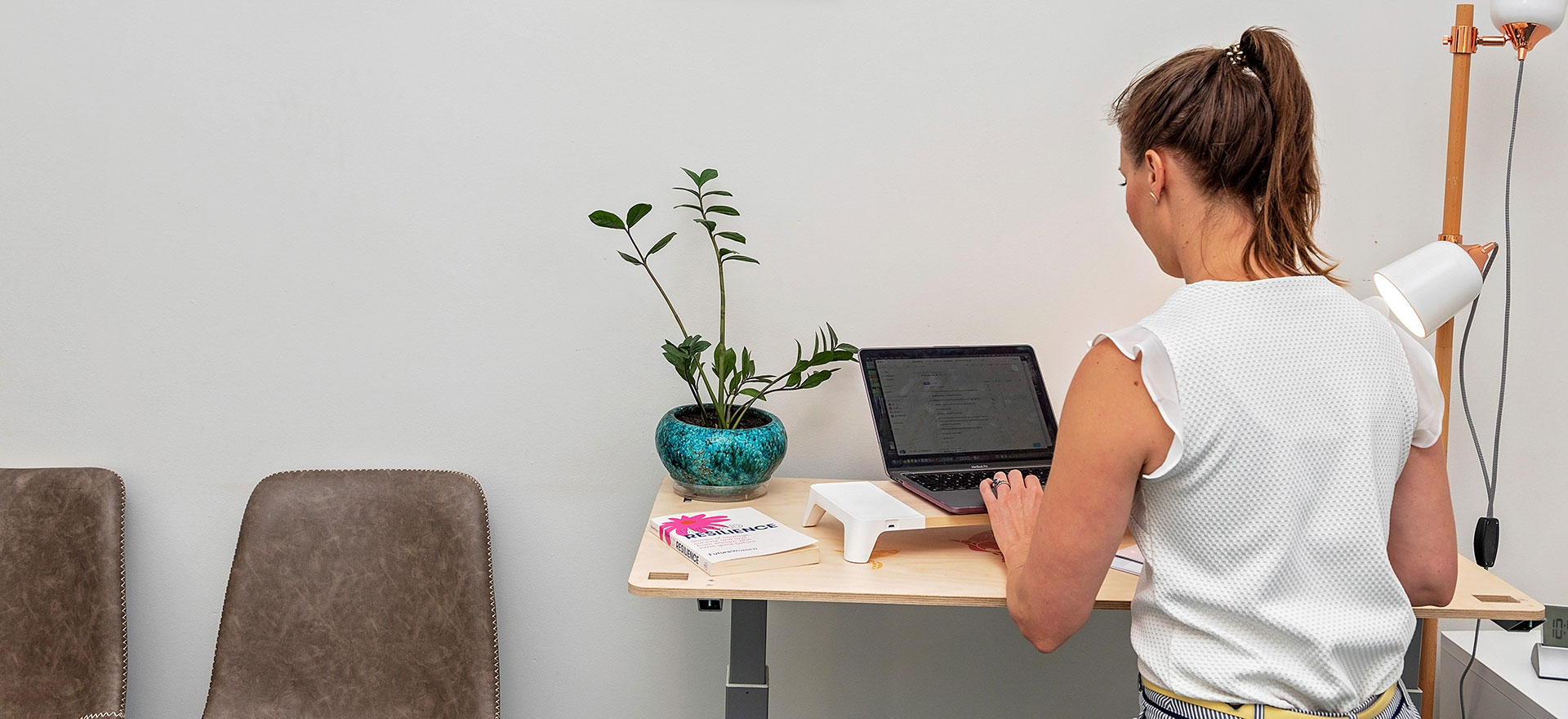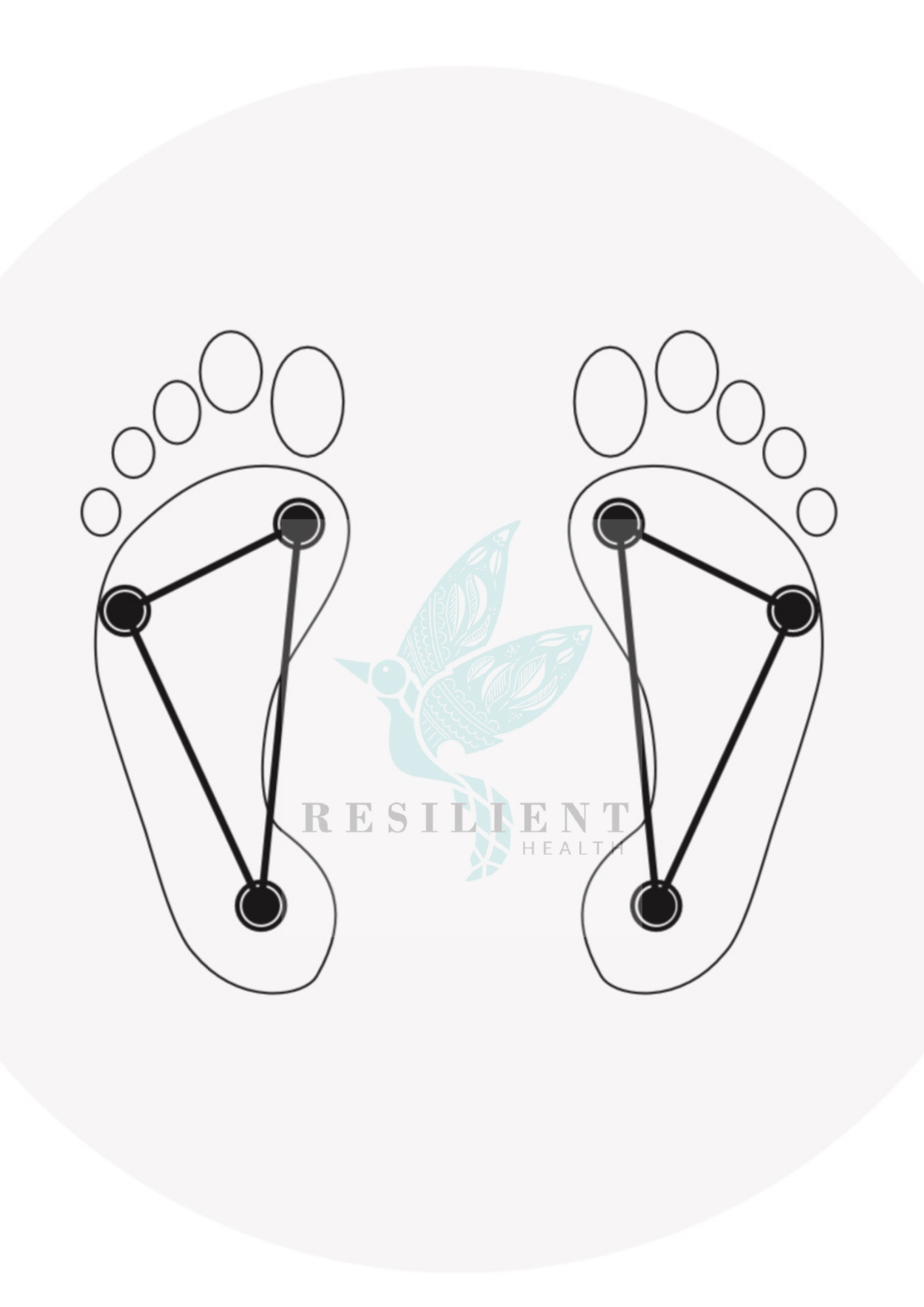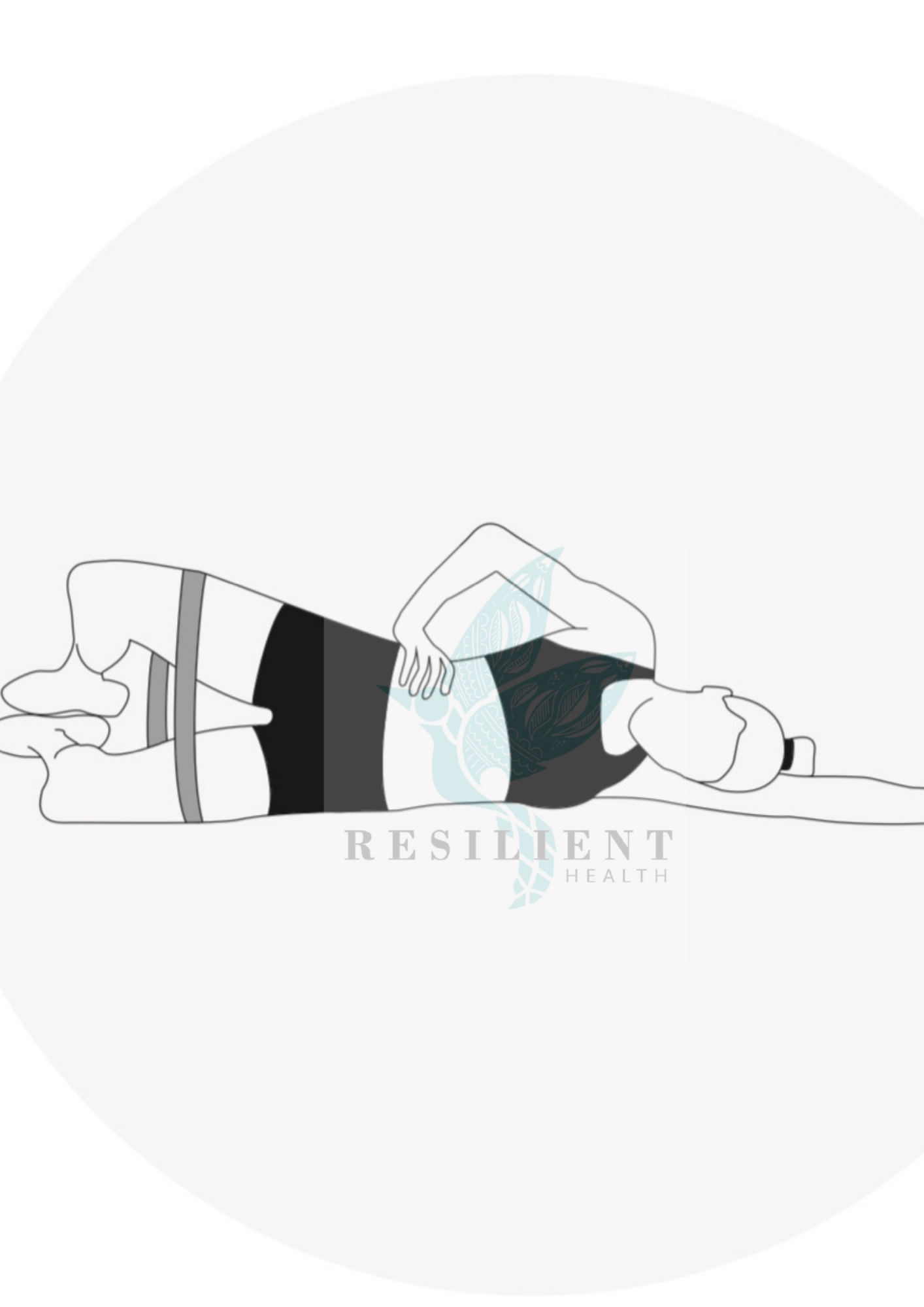Hip Pain: Is this you?
Written By our Resilient Health Osteopath Dr Courtnay Wood
Greater trochanteric pain syndrome (GTPS) is an overarching term used to describe chronic pain and tenderness of the lateral (side) hip.
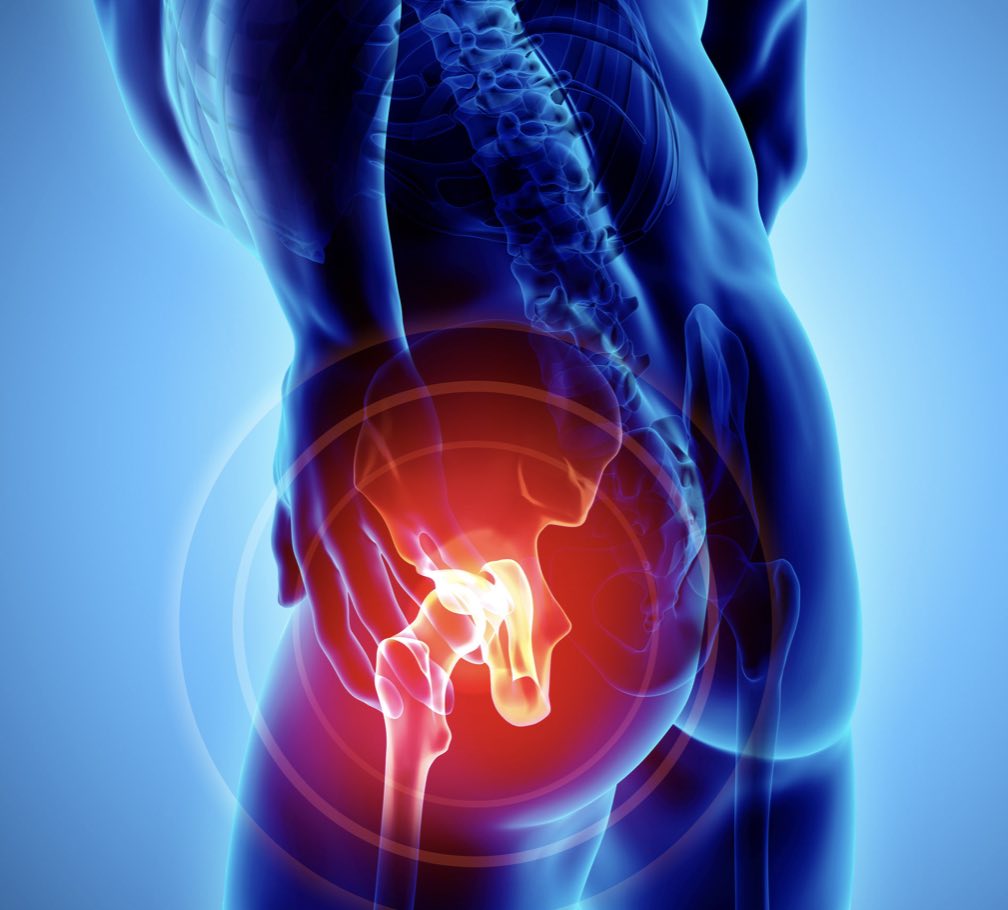
There are numerous structures that can contribute to lateral hip pain, these include, inflammation within a tendon or bursa, muscle tension/tears and ligamentous tension.
GTPS has a higher occurrence in women than men and symptoms can present as:
- Persistent pain in lateral (side) hip
- Radiations along lateral (side) thigh to knee; but rarely past the knee
- Pain worse with physical activity
- Pain worse when lying on the affected side
- Pain worse with prolonged sitting with legs crossed
- Pain worse with prolonged standing
- Pain when transitioning from sitting to standing
- Pain with climbing stairs
Some of the causes of GTPS include:
- Obesity
- A sudden increase in physical activity
- An increase in load to the tendons
- Repetitive trauma or compensation
- Pregnancy
- Co-existing lower back pain
- Osteoarthritis
- Iliotibial band (ITB) syndrome
- Habitual standing/sitting that places imbalanced load on an unstable pelvis
What can you do at home to help with your greater trochanteric pain?
- Strengthening and exercising. Supervised exercise physiology, pilates, yoga or Qi Gong
- Heat when in a chronic condition or ice if in an acute flared condition
- Avoid excessive loading, compression and stretching – e.g. avoid sitting cross legged, or standing on one leg
- When sleeping, pop a pillow between your knees when lying on your side or under your knees when lying on your back.
Want to problem solve a little more and pre-exercise or CHECK IN with your body?
Try these exercises…
Foot tripod
- Patient position: standing or sitting
- Concentrate on creating an even weight bearing distribution through both feet in 3 points – the ball of your big toe, the ball of your little toe and the center of your heel
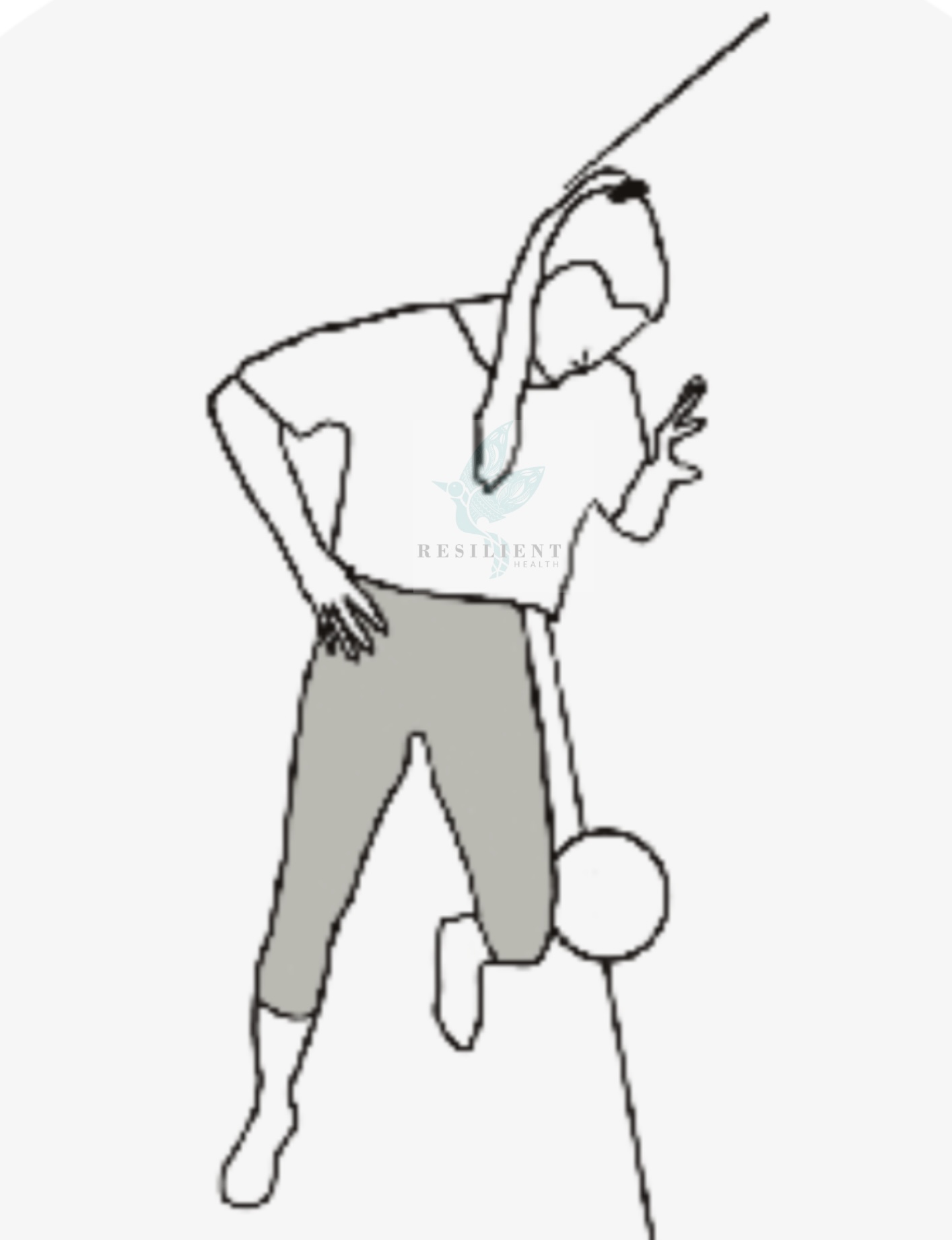 Isometric glute VS wall
Isometric glute VS wall
- Patient position: standing side on to a wall
- Lift your hip up to 90º, with the outside of your hip and knee on the wall
- Gently push your knee into the wall
- You can ask your Resilient Health practitioner to try this with a chi ball (see in pic with text) if you get good at this one!
- You should feel a small contraction through you buttock region
- Hold this for 5 seconds, relax and repeat
- Don’t forget to do the other side too!
*If this one is a little tricky for you- you can opt for a banded effort:
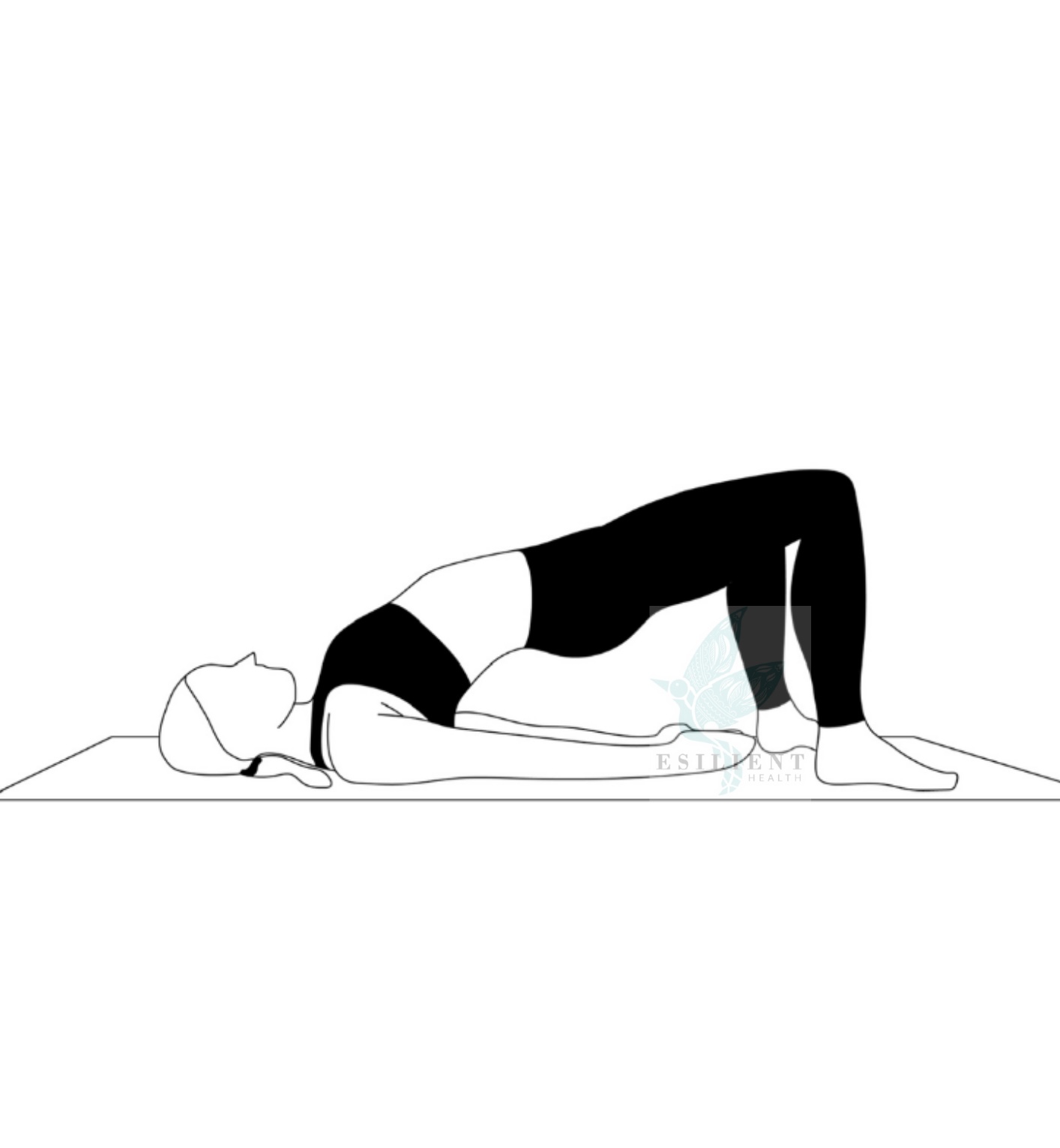
Bridges
- Patient position: lying on your back with your knees bent
- Activate your core, by drawing your belly button to your spine
- Gently curl your tailbone off the floor and lift your spine off the floor towards the ceiling, one segment at a time
- Pause at the top, making sure the front of your body is in a straight line, the slowly lower your body back to the floor, one segment at a time
See you in the clinic!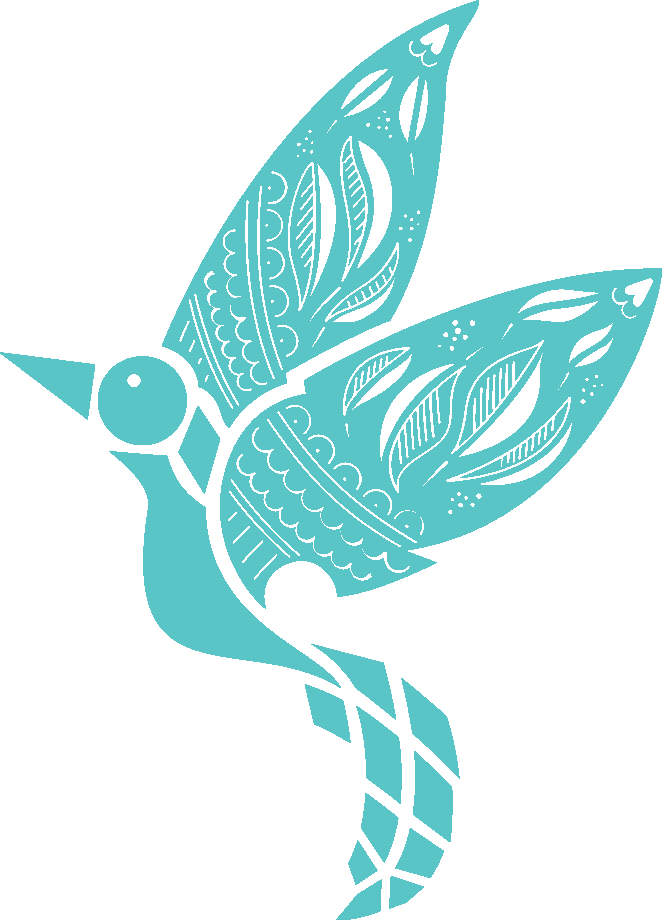
The Resilient Health Team
*Sketched images commissioned from @thejaquesstudio
References:
Williams BS, Cohen SP. Greater trochanteric pain syndrome: a review of anatomy, diagnosis and treatment. Anesthesia & Analgesia. 2009 May 1;108(5):1662-70.
Hip Pain Image from: https://my360pt.com/hip-pain
